Buckingham Palace serves as the British Royal Family’s London residence and was Queen Elizabeth II’s administrative headquarters before her death on Sept. 8, 2022. The State Rooms are still used by King Charles to receive and entertain guests. Of course, that makes it a must-visit spot when traveling to London.
Many gather in front of the palace to witness the ceremonial changing of the guards, and tours are available on occasion to give visitors a glance at State rooms. But those only make up a small portion of the 775 rooms within Buckingham Palace, 52 of them dedicated to the Royal Family and their guests.
Want to get a better understanding of exactly how the Royal Family lives? Follow along on our tour.
East Fascade, Facing the Mall
Buckingham Palace was originally Buckingham House, constructed in 1703. King George III bought the house in 1761 for his wife, Charlotte.
The home received an expansion by extending the length of the home in 1826. By 1847, the East Facade was added with the two connecting wings to enclose what’s called the Quadrangle and become the palace we see today.
Centre Balcony Room
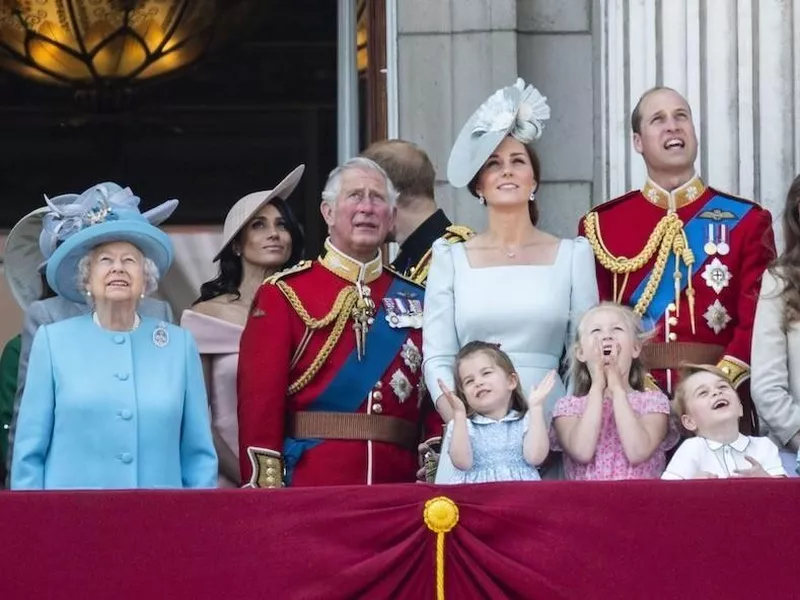
Star Max / AP
The view we most often see of Buckingham is that facing the East Facade, as the Royal Family appears on special occasions on the balcony off of the Centre Room.
Centre Room
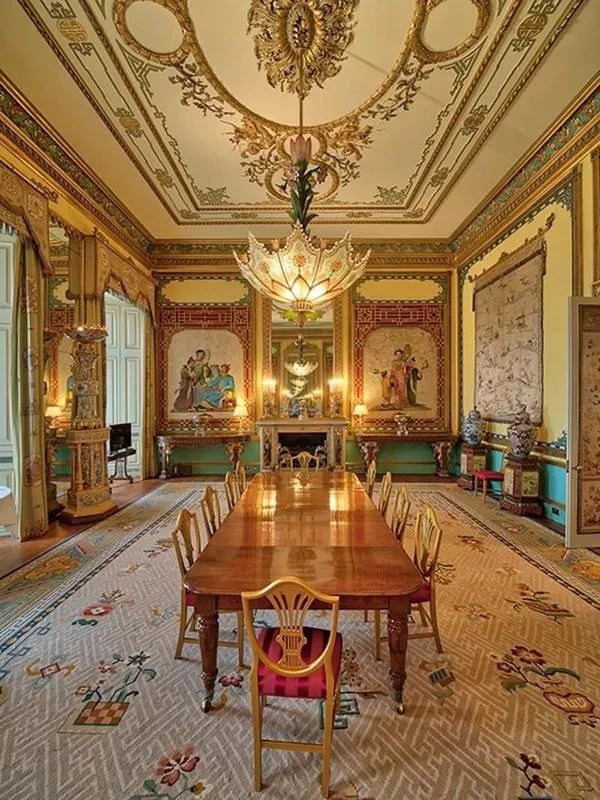
Buckingham Palace
Behind the Royal Family awaits the Centre Room, also known as the Chinese Lunch Room because the room is filled with Chinese regency furnishings.
Much of the pieces came from the Royal Pavilion in Brighton, and while this room and the adjoining Yellow Drawing Room undergo a renovation, 150 pieces will be returned to Brighton.
Yellow Drawing Room
Receiving its vibrant color for the arrival of Emperor Napoleon III and his wife Eugenie in 1855, the Yellow Drawing Room was adorned in yellow silk.
It was installed as an entertaining space for Queen Victoria and features its own balcony.
Yellow Dining Room
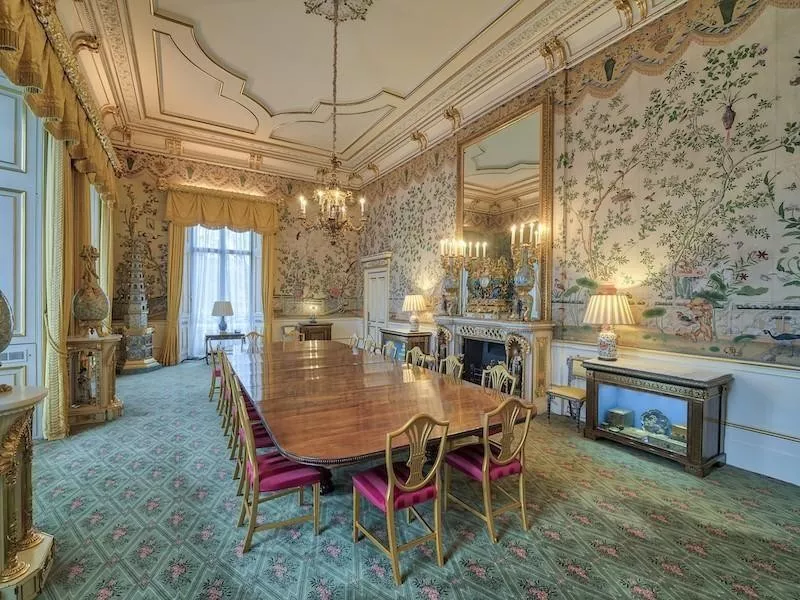
The Royal Family
The wallpaper from this portion of the Yellow Dining Room is a whopping 200 years old and originally from the Royal Pavilion (a seaside palace in Brighton, England).
It took a month to painstakingly remove to be preserved during the renovation of the room in 2020.
Ambassadors’ Court
Connecting the original palace with the East Facade, Ambassadors’ Court is where dignitaries and ambassadors arrive to enter Buckingham Palace.
Grand Entrance
The Grand Entrance is found within the Quadangle of the inner courtyard.
It is here where the Queen would exit and enter the palace and where guests arrive for special events leading into the Grand Hall.
West Wing
The State Apartments and rooms included on the official tour of Buckingham Palace can be found in the West Wing, which overlooks the gardens of the palace.
Much of the Ground Floor rooms here are used as offices, including the Keeper of the Privy Purse, the manager of the Royal Family’s finances.
Grand Hall (Marble Hall)
Entering the West Wing from the Ground Floor takes you to the Grand Hall, also called the Marble Hall for its marble columns.
The Grand Staircase
To arrive at one of the royal events, you’d climb the Grand Staircase to the First Floor.
Bow Room
However, if you didn’t ascend the staircase, you’d find yourself in the Bow Room. This room serves as an entranceway to the gardens, where Her Majesty held her summertime garden parties.
It is also used to host lunches for visiting Heads of State.
Ballroom
Within these walls are where magical events happen.
The ballroom is not only the place where the Queen would host her Diplomatic Reception and State banquets, but this is where future King of England Prince William and Catherine Middleton held their wedding reception.
At one end of the ballroom was a throne for the Queen and Prince Phillip. At the other end is an organ that was originally used at the Royal Pavilion’s Music Room, commissioned by George IV.
What Royal Receptions Look Like
The Ballroom measures 120-feet long, 59-feet wide and 44-feet high. When used for banquets, a horseshoe table shape is arranged. Place settings include six drinking glasses per guest, and more than 2,000 pieces of silverware are used for a dinner of just 170 guests.
A booklet featuring the menu, the guest list and seating plan, and the music that will be played during the event is placed atop the china. The colors of the nation visiting are featured in a ribbon that decorates the booklet.
State Dining Room
Although not as large as the Ballroom, the State Dining Room of Buckingham Palace can seat up to 170 guests when the Queen would host her State Dinners.
Music Room
Queen Victoria and Prince Albert loved music and loved to play the piano and sing together, so they created this stunning Music Room.
During Queen Elizabeth II’s reign, it was used for more than music, though. This is where she had her son and daughter, Prince Andrew and Princess Anne, christened, as well as her grandson, Prince William.
Throne Room
When the occasion called for the Queen to fulfill her monarch duties, she took a seat on her throne and welcomed the court.
When not in use for courtly gatherings, the room is used as a smaller dance room when the ballroom is deemed too large.
Picture Perfect
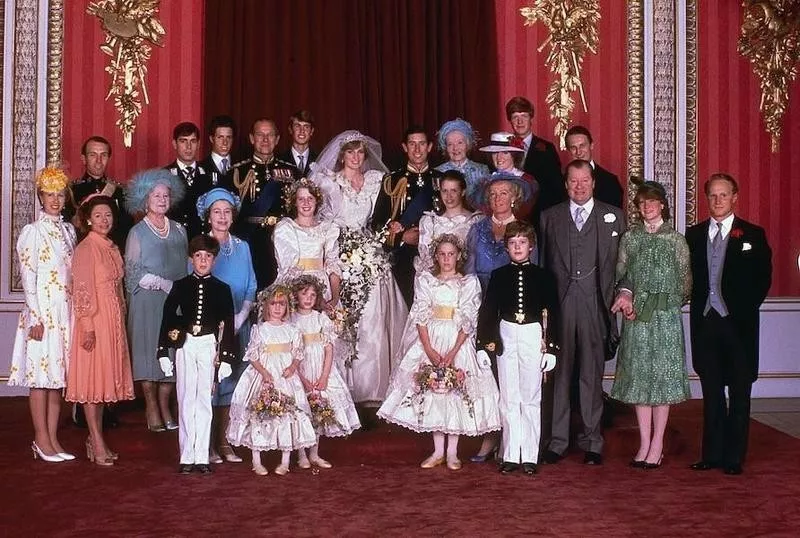
AP Photo
Family portraits are often taken in the Throne Room because the risers for the throne help organize family members for photoshoots.
Plus, that velvet curtain screams royal backdrop.
Green Drawing Room
The green color of this drawing room can be attributed to Queen Victoria and Prince Albert who loved to collect watercolors and Sevres porcelain found in this room.
This is an antechamber to the Throne Room and the ceremonial route that the Queen and her guards would take.
1844 Room
Named for Tsar Nicolas I, who visited in 1844, this room is often used to receive guests for State duties. His portrait once adorned the walls of the room but has since been removed.
The Queen had a buzzer she would push to announce she was ready to accept a guest, and many meetings included photographers to capture the moments.
White Drawing Room
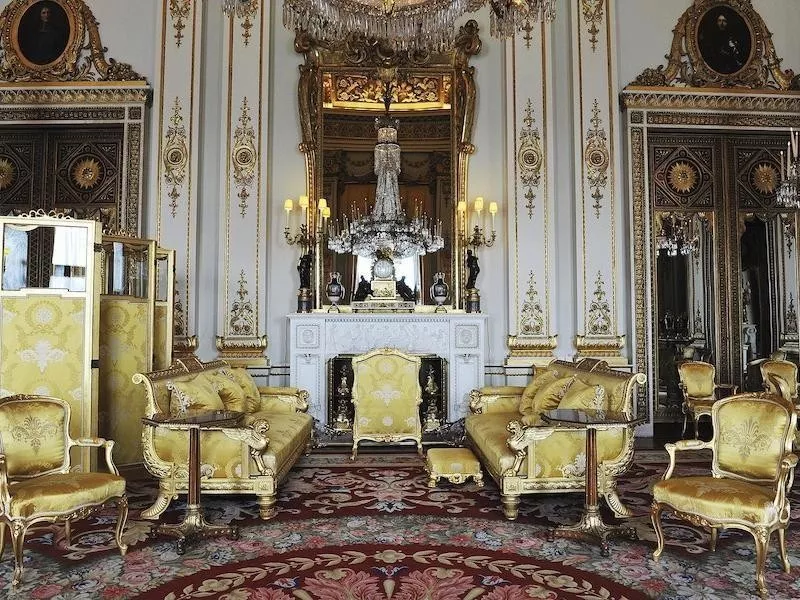
Nick Ansell / AP
When the Queen received guests in a more intimate fashion, this room was often the setting.
Not only was the White Drawing Room a favorite of the Queen, but it also contains a hidden doorway to her private apartments.
Hidden Doors and Passageways
The White Drawing Room’s doorway is hidden behind a very large gilded chest and mirror.
There are rumors of underground tunnels linking the palace to Whitehall and the Houses of Parliament.
Regency Room
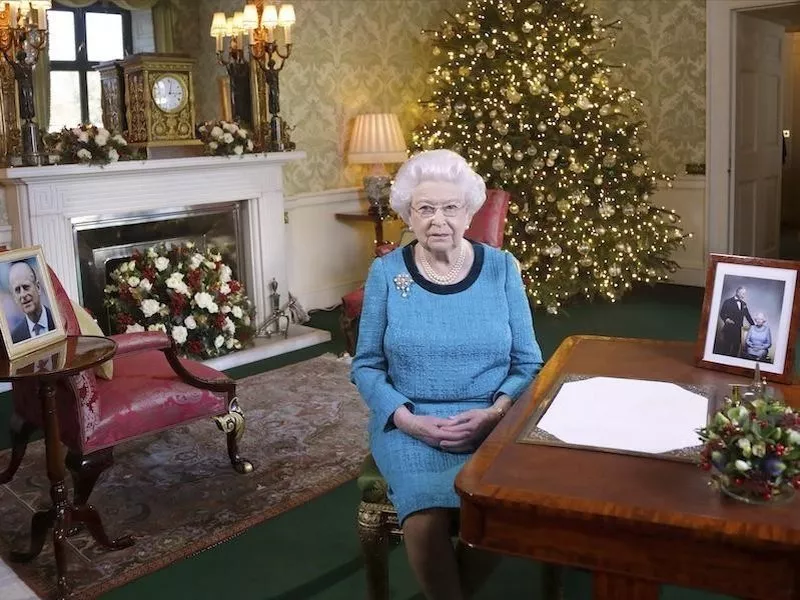
Yui Mok / AP
Anyone who watched the Queen address her people at Christmas has seen the Regency Room.
With its green and gold color scheme, it pairs well with holiday decor for her intimate annual broadcasts.
Blue Drawing Room
The blue wallpaper of this room used for hosting State officials has been on the walls as-is since 1949.
Until the recent renovations began in 2019, the post-war redecoration was the last for the palace, and some have complained it has been stuck in time. The Blue Drawing Room, however, will be staying blue.
Belgian Suite
The suite offered to Heads of State, including President Obama, when they visit and stay at the palace is a series of rooms that includes a bedroom and a sitting room. There are many additional rooms located around it so security and staff can stay close.
Before abdicating the throne in 1936, King Edward VIII called the Belgian Suite home. It is located on the Ground Floor beside the Minister’s Staircase.
Belgian Suite Bedroom
When the Queen’s father, King George VI, became king, the Belgian Suite became the home to her family when she married Prince Phillip in 1947.
She even delivered her son Edward in the bedroom. In fact, all three of Queen Elizabeth’s sons were born at Buckingham Palace. Princess Anne was born at Clarence House during the palace renovations.
Picture Gallery
Connecting the rooms of the First Floor of the West Wing, this is not your average corridor.
The Picture Gallery is a small museum showcasing some of the works owned by the Royal Family.
And More Royal Family Art
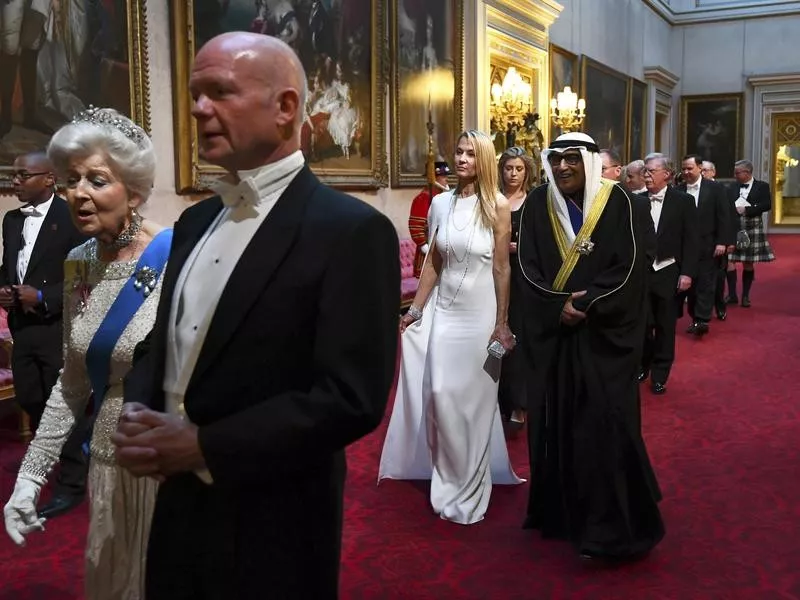
Victoria Jones / Pool Photo via AP
Several dignitaries have passed through the Picture Gallery during State Banquets, like during the one pictured here in June 2019 for the U.S. President’s three-day visit.
A second art gallery can be found in the space that was once a chapel for Queen Victoria. It was destroyed during World War II, but to celebrate the Queen’s Golden Jubilee in 2002, it reopened as the Queen’s Gallery. Much of the work within Buckingham Palace is being relocated so that more people get a chance to view the artwork.
East Wing Corridor

Buckingham Palace
The main corridor of the East Wing just received a makeover in 2019.
The palace tweeted the photo on the right: 3,000 works of art and decor found in this corridor have been removed, including its 100 mirrors, 40 chandeliers, 30 clocks and 200 paintings as it goes through its current refresh.
Private Residence
This map illustrates the First Floor of the North Wing, which contains the private residences of the royal family.
On the Ground Floor, beneath the residences, are the offices of the staff who attend to family members.
Audience Chamber
When the Queen met with you one on one, such as she did with the Prime Minister, she received you in the Audience Chamber of her private residence.
Queen’s Sitting Room
This painting of the Queen’s Sitting Room is a glimpse at what the current royal family memebers may enjoy today. This watercolor was painted in 1848 and features portraits of Queen Victoria’s family.
It is said the Queen only used a few rooms in the house regularly: her bedroom, her sitting room, her dressing room and the Audience Chamber.
A Private Moment
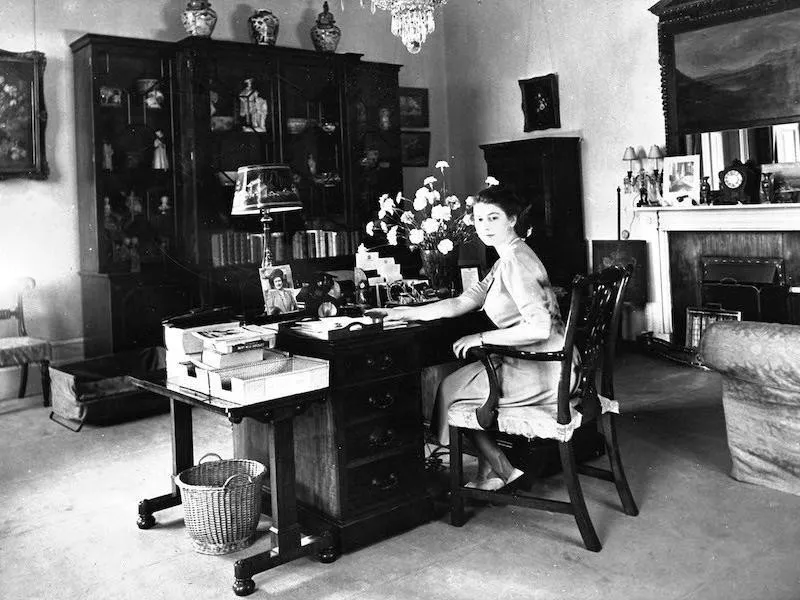
AP
Before she became queen, Elizbeth was a young girl living in the palace. This was then-Princess Elizabeth’s private office.
Although she had desk space in the Regency Room, her main office was in the residential portion of the palace. Former staff members say she kept lots of clutter on her desk and did not like anyone attempting to clean it up.
Queen’s Bedroom
Part of the official tour of the palace, this bedroom was not the actual bedroom of Queen Elizabeth II but may give a hint as to what hers looked like.
King’s Bedroom
Also a part of the tour and not actually the bedroom occupied by Prince Philip, the King’s Bedroom showed that the royal couple had separate rooms throughout their marraige.
Royal Closet
The Queen had a private dressing room, which can be seen in this photo taken in 1873. It was originally part of the Audience Room.
All in the Family
Princess Anne and Prince Edward, have offices at Buckingham Palace for their royal duties. Prince Andrew and Prince Edward also have private apartments within the palace.
King Charles conducts business from the Clarence House.
Swimming Pool
Tucked off of the Residential wing is an indoor swimming pool with views of the gardens.
Staff members are allowed to enjoy the pool during off-hours.
The West Facade
The West Facade leads to the 40-acre garden.
Because the Queen was a keen gardener herself, the staff used to leave her a posy of flowers on her desk every Monday, so she could see what was in bloom that week.
Buckingham Palace Gardens
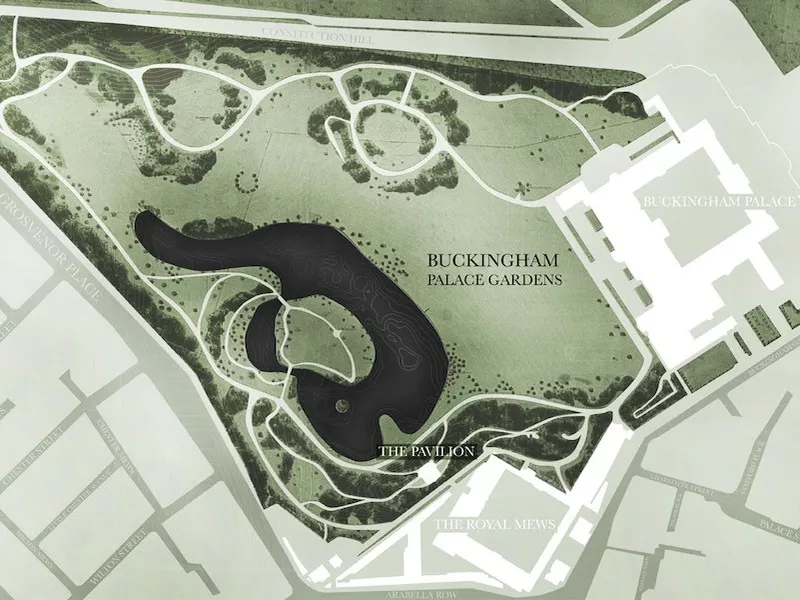
The palace garden is listed on the Register of Historic Parks and Gardens and is said to have a mulberry tree that dates back to James I of England in the late 1500s.
The garden is open to the public in August and September and features 2.5 miles of walking paths.
Garden Parties
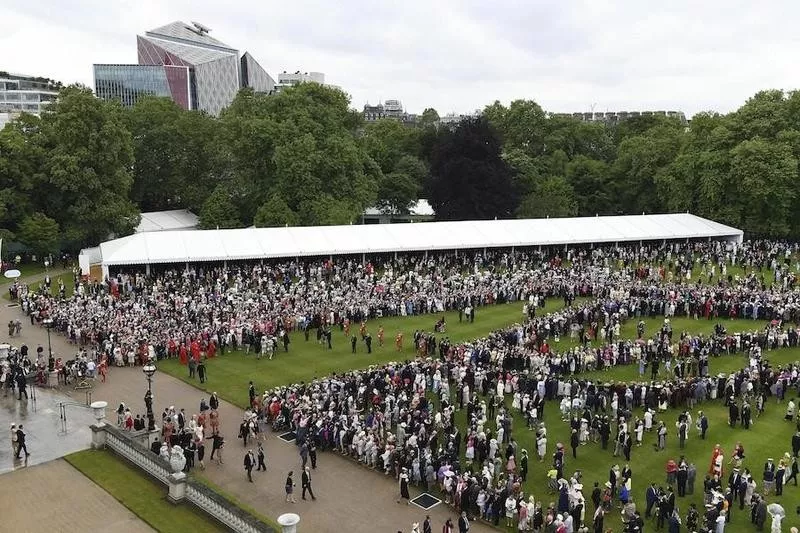
Ben Stansall / AP
Every June, the Queen would invite a select not-so-few to attend her annual Garden Party.
Behind the Scenes
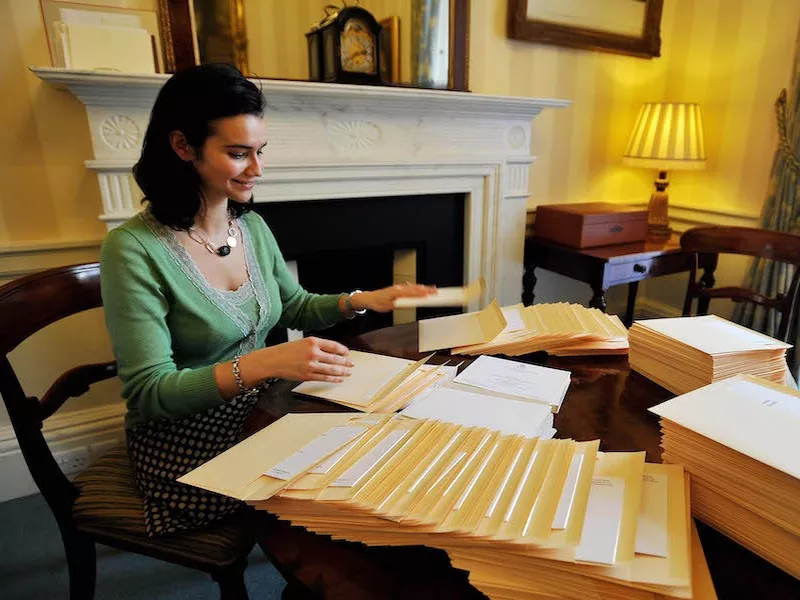
John Stillwell / AP
Of the 775 rooms at the palace, 188 bedrooms are dedicated to staff.
There are 78 bathrooms and 92 offices inside, too — this is the administrative headquarters of the Royal Family, after all. Eight-hundred staff work within the palace walls.
Security

Getty
The King’s Guard is famous for its bright red coats and furry black hats, but they are not the only ones keeping an eye on the royal family.
The grounds of Buckingham Palace are adorned with cameras, motion detectors and security from all angles. Underground tunnels can help get family members out of the building, should they need to escape.
Horse Guard
The royal family is also protected by the Horse Guard. Located between the palace and Whitehall, the building houses the cavalry, the family carriages and cars.
Part of the building is open to the public as a museum. The Changing of the Guards’ horse parade is even more exciting to witness than the Changing of the Guards.
The Kitchen
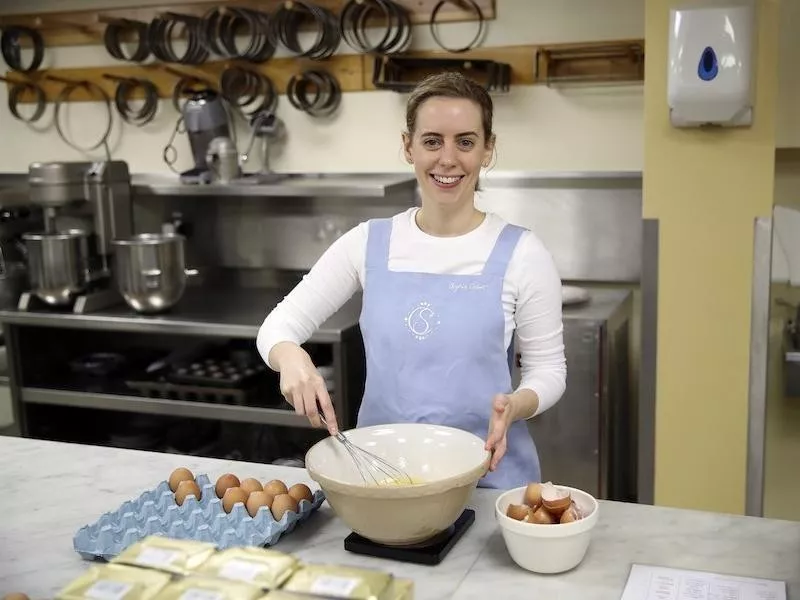
Chris Jackson / AP
The royal kitchen may have to cook for up to 3,000 people in one day if a diplomatic reception is taking place. Past chefs spilled that the Queen’s favorite was venison, and her least favorite was garlic, which is banned.
Interestingly enough, menus for receptions are also written in French.